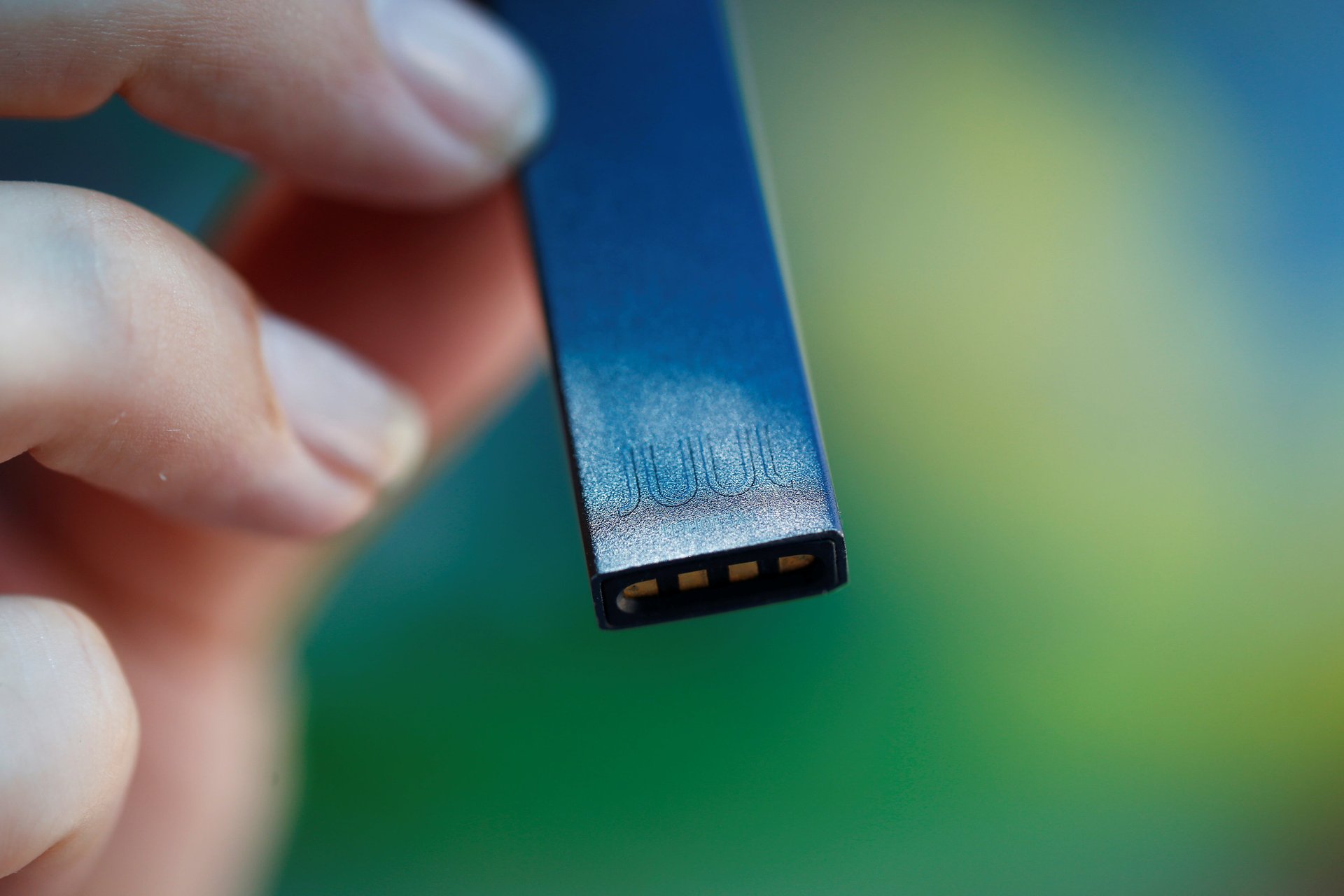US high schoolers have less sex and do less drugs, but vape a lot more
American kids these days—they’re just so well behaved. They do less drugs and they have less sex. Unless you count Instagram and Snapchat, vaping is the only vice clearly on the rise among US teens.


American kids these days—they’re just so well behaved. They do less drugs and they have less sex. Unless you count Instagram and Snapchat, vaping is the only vice clearly on the rise among US teens.
According to data from a survey from the National Institute of Drug Abuse, the use of nearly every major drug fell among 12th graders in the US over the past two decades. In 2018, about 40% fewer kids reported drinking alcohol in the last 30 days and 75% fewer reported smoking cigarettes than did in 2001. The percentage who reported having been drunk in the past 30 days almost halved, from 34% in 1997 to 18% in 2018. MDMA, often called “molly,” is also down (it’s not listed in the chart below due to a change in how the question was asked over the survey period). Marijuana use has remained about the same, making it the exception to the rule.
In a possibly related trend, the share of high schoolers having sex is also down. In 2017, 57% of 12th graders in the US reported ever having sex. That is the lowest share since the US Centers for Disease Control and Prevention (CDC) began surveying high schoolers in 1991. The high was 68% in 1993. Partly as a result of this, the teen birth rate has plummeted.
But at the same time that sex and drugs are getting less popular, vaping is going through the roof. In 2018, 21% of US high schoolers reported using e-cigarettes in the past 30 days. That was up from 1.5% in 2011, according to data from the CDC. Much of the rise since 2016 has been a result of the popularity of Juul, an e-cigarette shaped like a USB flash drive that now dominates the US market.
So what makes Juuling so appealing even as young people turn away from other vices? The US Food and Drug Administration (FDA) isn’t entirely sure. Most observers think it’s a combination of available flavors, high levels of addiction-inducing nicotine, and the way that Juul fits into modern lifestyles.
In addition to “classic tobacco,” Juul offers flavors such as mint, mango, creme, cucumber, and fruit. Kids find these flavors attractive. More than two-thirds of those who used e-cigarettes in the last 30 days reported vaping flavored ones. Fruit was the most popular flavor among 12-17-year-olds in 2018, according to a survey by the anti-tobacco nonprofit the Truth Initiative. A 2017 study of 12-29-year-old e-cigarette users found that 75% said they would quit vaping if flavors didn’t exist.
Once you start Juuling, it’s also hard to stop. One of the reasons Juul has been effective as a means to get adults to stop smoking cigarettes is its high concentration levels of nicotine. Other smoking-cessation products don’t pack the same nicotine punch, making them less attractive to the addicted. At the same time, these high levels of nicotine make it more likely that kids get hooked. “I do think it’s notable that it’s been around for longer than things that are a fad normally are,” a New York high schooler named Zoe told The Cut. “And a reason is that it does cause nicotine addictions and the people using them are addicted to nicotine, so that’s going keep them around.”
Finally, there are the ways that Juul fits young people’s sensibilities. Like the social media many teens grew up on, it is a technology product that offers a short burst of pleasure. The New Yorker’s Jia Tolentino aptly explained the connection in an essay on the rise of Juul. “You can take two Juul hits and double-tap a bunch of pics in about 10 seconds,” she writes. “You need an inefficient five minutes to burn a paper tube of tar and leaves into ash.”
Though there are serious concerns about the health effects of Juuling, perhaps the biggest problem with teen e-cigarette use is that it may make kids turn to a worse vice: smoking regular cigarettes. A committee formed by the The National Academies of Sciences, Engineering, and Medicine examined 10 research studies on the effect of teen and young-adult vaping, and concluded that vaping makes young people more likely to smoke than if vaping had never existed.